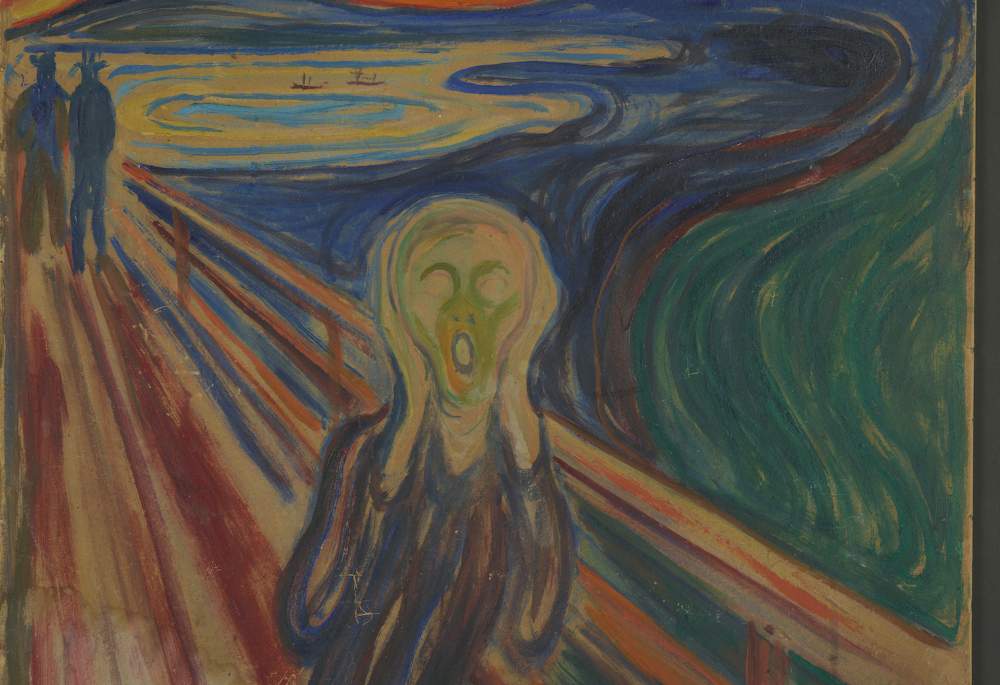The docufilm about Munch arrives. In theaters Nov. 7, 8 and 9
Only on November 7, 8 and 9, 2022, it will be possible to see in cinemas throughout Italy the docufilm Munch. Loves, Ghosts and Vampire Women, dedicated to Edvard Munch (Løten, 1863 - Oslo, 1944) ahead of the 160th anniversary of the birth of the famous artist whose anniversary will fall in 2023.
Produced by 3D Productions and Nexo Digital, the docufilm, directed by Michele Mally, who co-wrote the screenplay with Arianna Marelli, is intended to shed new light on Munch; but it is also meant to be a journey through his native Norway, in search of the roots and identity of a universal artist, who invites us to question the main theme of his art: his idea of time. His Scream has become an icon, and in Oslo the new Munch Museum, a spectacular skyscraper on the Norwegian capital’s fjord designed to house the painter’s immense legacy to his city, opened in October 2021.
The film will then delve deeper into his production, because as well known as he is, Edvard Munch is most famous for TheScream, but the same cannot be said of the rest of his output. Now, however, the city of Oslo marks a turning point in our knowledge of the artist: the new Munchmuseet, opening in October 2021, is a spectacular skyscraper on the Norwegian capital’s fjord, designed to house the painter’s immense legacy to his city. An extraordinary legacy that offers an exceptional insight into the mind, passions and art of this Northern genius.
The docufilm opens in Edvard Munch’s home. On a winter night, in front of the hearth, a young woman (actress Ingrid Bolsø Berdal), the chosen guide for this journey, reads a Norwegian fairy tale to the children. We are in the world of the Great North, where winds speak, bears carry girls on their backs, and trolls cast evil spells. Yet, Edvard Munch’s fairy tale ended early: the death of his mother, followed by that of his sister Sophie, as well as his father’s devastating depression, would soon mark his human and artistic life. As his biographer Sue Prideaux recounts, Munch lived eighty troubled years, amid psychiatric problems, alcoholism, and isolation. Art historians such as Jon-Ove Steihaug, director of the Exhibitions and Collections Department of the Munch Museum in Oslo, Giulia Bartrum, for decades curator at the British Museum, and Frode Sandvik, curator of the Kode in Bergen, analyze the themes and obsessions of his work, but also his artistic skills and the different techniques he used. Munch’s exploration of the human soul and his attempt to translate emotions onto canvas or paper find correspondence in the experimental techniques he chose to adopt, thus making his works, as conservator Linn Solheim explains, extremely fragile. Crucial also is the fin de siècle bohemian experience: Munch lived as a bohemian first in Kristiania, and later in Berlin, where he befriended the playwright August Strindberg and fell in love with the magnetic Dagny Juel, hanging out with Satanists and doctors experimenting with the use of cocaine.
Even Munch’s complex relationship with women cannot be explained from biographical events alone, such as his stormy relationship with Tulla Larsen, the lover who shot Edvard during an argument. For him, trauma and art, desire and torment constantly merge in an intense reflection on women. In the docufilm, the most intimate ties to the Northern landscapes and its vivid colors also emerge. They resonate in the compositions of Edvard Grieg, who spent his summers in the nature of Troldhaugen Hill in Bergen. He was able to recreate the feeling of “being at home,” as pianist Leif Ove Andsnes also conveys to us. But still, in this continuous repetition, as well as in visual experiments through film and photography, we can find the key to enter Munch’s time.
Also guiding viewers through Munch’s story are talks by Erik Hook, Director of the Strindbergsmuseet in Stockholm, Siri Kval Ødegard, Soprano and Entrepreneur, Carl-Johan Olsson, Curator 19th-century Painting at the Nationalmuseum in Stockholm, and the film’s soundtrack, which includes repertoire pieces, including those by Norwegian composer and organist Iver Kleive. In contrast, musician and composer Maximilien Zaganelli wrote the original music for the film, which will be featured on the album Munch. Love, ghosts and lady vampires - Music inspired from the film, due out in November on the Nexo Digital label and Believe Digital distribution.
The Great Art at the Movies is an original and exclusive project of Nexo Digital. It is distributed with media partners Radio Capital, Sky Arte, MYmovies.it and in collaboration with Abbonamento Musei.
Pictured: Edvard Munch, The Scream, detail. Credit Munch, Oslo
 |
| The docufilm about Munch arrives. In theaters Nov. 7, 8 and 9 |
Warning: the translation into English of the original Italian article was created using automatic tools. We undertake to review all articles, but we do not guarantee the total absence of inaccuracies in the translation due to the program. You can find the original by clicking on the ITA button. If you find any mistake,please contact us.




























